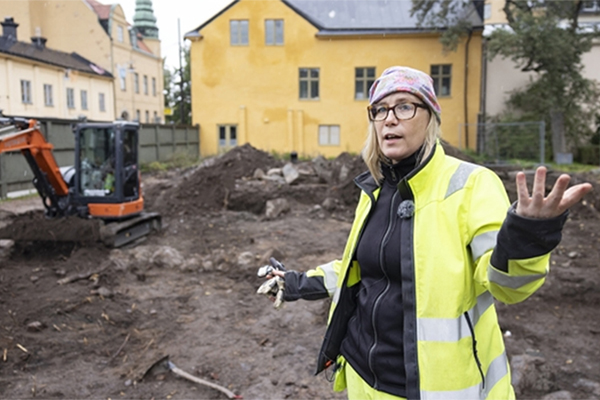Archaeologist Annika Nordström kneels digging in the excavation trench, which is now about a metre deep. She is in charge of the excavation project that is currently being conducted by the entrance to the garden. A new visitor centre is planned here and as it will be a permanent construction, the County Administrative Board ordered excavation of the area beforehand. Digging has been underway for a month already.
"The objects we've come across include plenty of everyday items, like ceramic tableware. But we've also found a relatively large amount of bone china – not that surprising, this was Linnaeus's household, after all," Nordström explains, showing some of the shards the team has dug up.
Bones of countless fish and birds
When Linnaeus moved into the house in the academic garden in the mid-18th century, he had two outbuildings constructed. The excavation covers the area where these two buildings once stood and adjacent ground. This past month, the archaeologists have come across remains that provide clues about the possible use of the outhouses.
“The room to the west contained a massive fireplace. Our analysis of the soil and the objects we found where this fireplace used to be has led us to believe that the room was used as a laundry or a bakery," Nordström says.
“The eastern room had a smaller fireplace. Our archaeobotanist dug up a staggering number of fishbones there. We think the room might have been used to prepare meals in, or perhaps even to dry fish.”
The dig has unearthed other types of bones too. It was already known that Linnaeus kept various animals in the garden. To this day, for example, visitors can see the cages further down the garden that used to house monkeys. But the bones that have been found mostly seem to have come from animals that were eaten.
"We've found tremendous amounts of bird bones, which our osteologists will be inspecting. There would have been chickens, of course, but we also know cassowaries and peacocks were kept in the garden, so we're excited to hear which species our colleagues believe the bones belong to.”
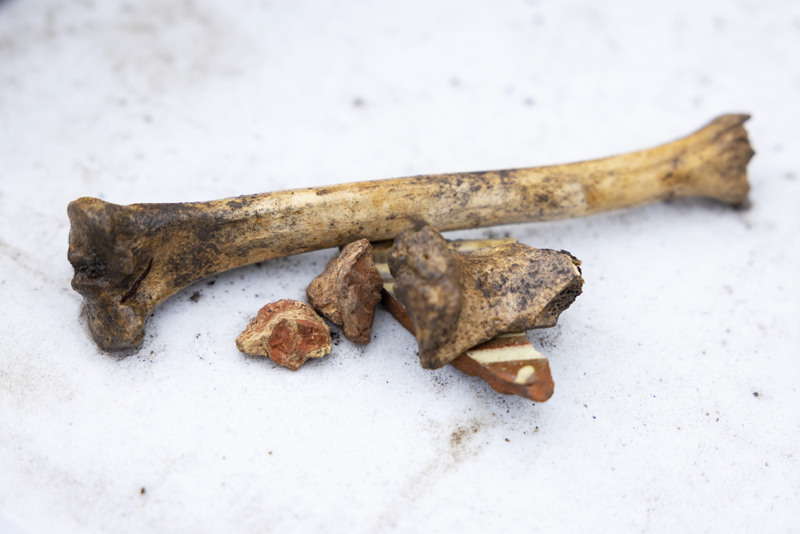
CAPTION: Bones can tell us about people's diet and about the animals that lived in an area. Linnaeus owned many exotic animals – but it is not known exactly which, or where they were kept. Photo: Mikael Wallerstedt.
The team has also taken soil samples. Analysing ancient excrement can reveal which animals used to live in a place, as traces of species-specific parasites remain.
Unique chapter of garden history
Annika Nordström has shown many people around the excavation site. Almost every visitor and journalist has asked her about the bones, she says. What truly piques her own interest, however, are the garden-related discoveries. The excavation site has turned up plenty of plant pots. While we know they began to be manufactured some time in the 16th or 17th century, little else known about such pots.
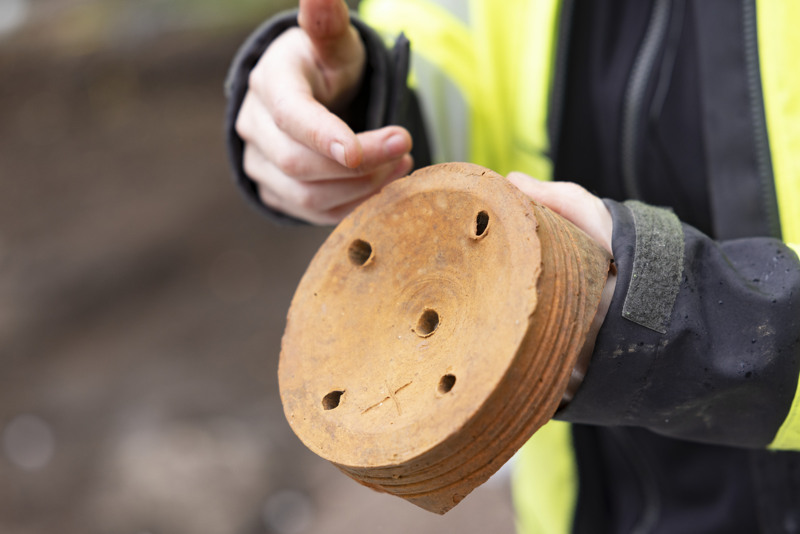
CAPTION: The pots found at the excavation site could mark the beginning of Swedish garden archaeology. Photo: Mikael Wallerstedt.
“They've only ever been found in a few other places. There hasn't been any research into these objects in Sweden before, so this is incredibly exciting – we’re really thrilled about this.”
The excavation site is located just outside the botanical garden itself. The fact that the team has found so many pots, however, suggests some sort of planting activity occurred here as well. Nordström hopes that macrobotanists will be able to find traces of seeds that will give a better picture of the kinds of plants that were once cultivated here.
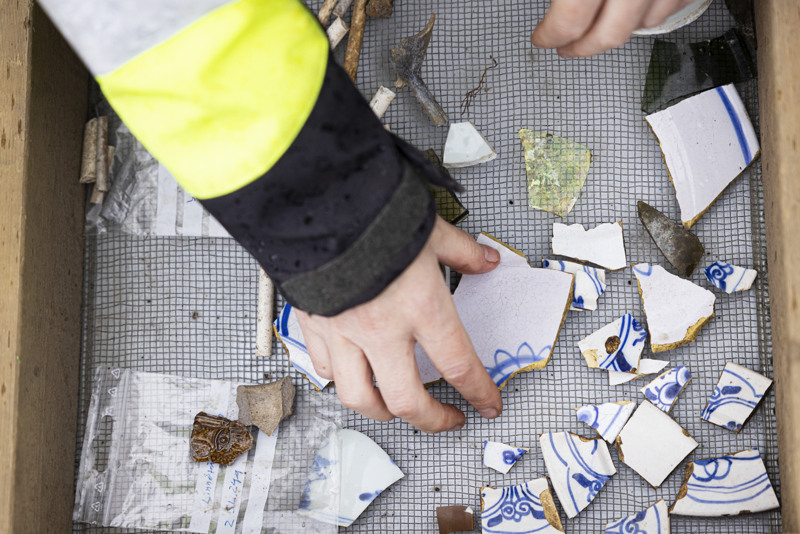
CAPTION: Both earthenware and pottery from the 18th century have been found. Photo: Mikael Wallerstedt.
Visitor magnet and source of new knowledge
Annika Nordström says she has never known the public to show such interest in an excavation. Part of the attraction is of course due to the place's link with Olof Rudbeck and Linnaeus himself.
Over the years, numerous publications and maps have already explored Linnaeus's life and work. Despite this, Nordström is convinced that the project's discoveries and analyses will teach us things we did not know before about one of Sweden's most-studied scientists.
“Our contribution as archaeologists is that we take a bottom-up approach and look at everyday life. Of course we are looking at the outhouses, not his actual residence, but all of these objects are connected with Linnaeus and can tell us more about daily life at the time. What did people do? How did they live? Material remains can answer those questions for us in a way written sources never can.”
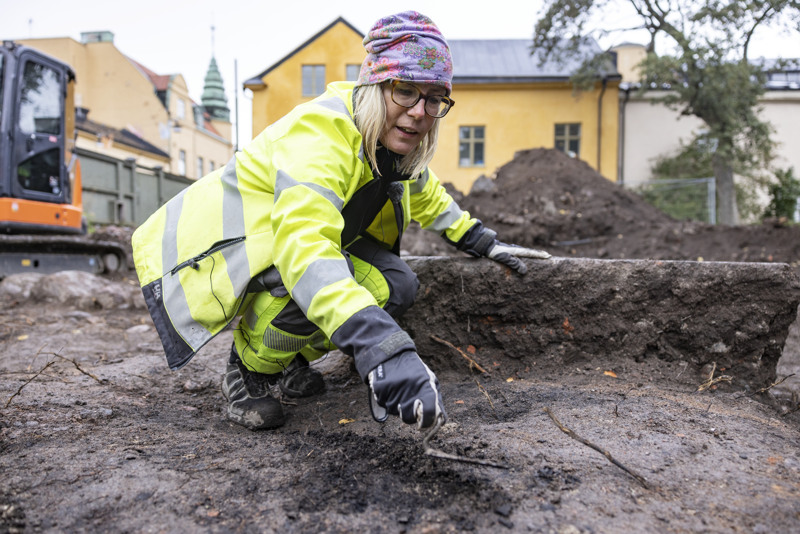
CAPTION: The team has discovered remains at the site that date back much further than Linnaeus's time: metal detectors have shown that there are coins from the Middle Ages buried deeper in the earth. But as the excavation will only go down to a depth of one metre, these will remain untouched. Photo: Mikael Wallerstedt.
